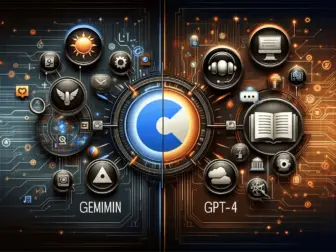Tag - Image and Video Understanding
Advancements in AI: Delving into the Nuances of Image & Video Understanding
Advancements in AI: Delving into the Nuances of Image & Video Understanding
As the digital age progresses, the ability to effectively analyze and understand visual content has become paramount. The realm of image and video understanding is a vibrant area of research in artificial intelligence that promises to revolutionize how machines perceive and interpret the visual world. This technology has far-reaching applications, from enhancing security systems and autonomous vehicle navigation to transforming the entertainment industry and improving healthcare diagnostics.
Image and video understanding involves the application of computer vision, machine learning, and pattern recognition techniques to enable computers to process, analyze, and understand visual data at a level that is comparable to, or in some aspects, surpasses human capabilities. The process begins with the acquisition of image or video data, which is then preprocessed to enhance quality and extract relevant features for analysis.
One of the key components of image understanding is object detection and recognition. This involves identifying and classifying objects within an image into predefined categories. Advanced deep learning models, such as convolutional neural networks (CNNs), have proven highly effective in this task, achieving impressive accuracy rates. These models are trained on vast datasets containing millions of labeled images, learning to recognize patterns and features that are indicative of various objects.
Video understanding extends these concepts into the temporal domain, adding the challenge of interpreting dynamic scenes and understanding actions over time. Here, recurrent neural networks (RNNs) and more recently, 3D convolutional networks, come into play, analyzing sequences of frames to recognize activities, track object movements, and even predict future actions.
One of the most exciting developments in video understanding is the ability to perform scene segmentation and generate rich semantic descriptions of video content. This allows for the extraction of not just the objects present, but also their attributes, relationships, and the overall context of the scene. For instance, AI can now describe a scene in a video as “a group of people playing soccer on a grass field” rather than just identifying individual objects like “person” or “ball.”
However, image and video understanding is not without its challenges. Variability in lighting, occlusions, and the sheer diversity of object appearances and actions make it a complex problem. Furthermore, the ethical implications of pervasive visual recognition technology, such as privacy concerns and the potential for misuse, are critical considerations that researchers and developers must address.
The applications for advanced image and video understanding are vast. In healthcare, algorithms can assist radiologists by rapidly identifying anomalies in medical images, leading to earlier diagnoses and better patient outcomes. In retail, real-time video analytics can help understand customer behavior and preferences, optimizing store layouts and product placements. In the realm of public safety, intelligent surveillance systems can detect suspicious activities and alert authorities, potentially thwarting criminal acts or even terrorist threats.
Moreover, the entertainment industry has begun leveraging AI for content creation, where it can analyze scripts and suggest scene compositions, or even generate realistic visual effects. In the realm of social media, image and video understanding technologies help in moderating content, ensuring community guidelines are upheld and harmful content is swiftly removed.
In conclusion, the strides made in image and video understanding are a testament to the remarkable advancements in artificial intelligence. As the technology continues to evolve, it heralds a future where machines will not only see the world but will also comprehend it in ways that enrich human experiences across various domains. Nevertheless, as we navigate these breakthroughs, it remains imperative to consider the ethical implications and ensure that the benefits of these technologies are realized responsibly and equitably.
